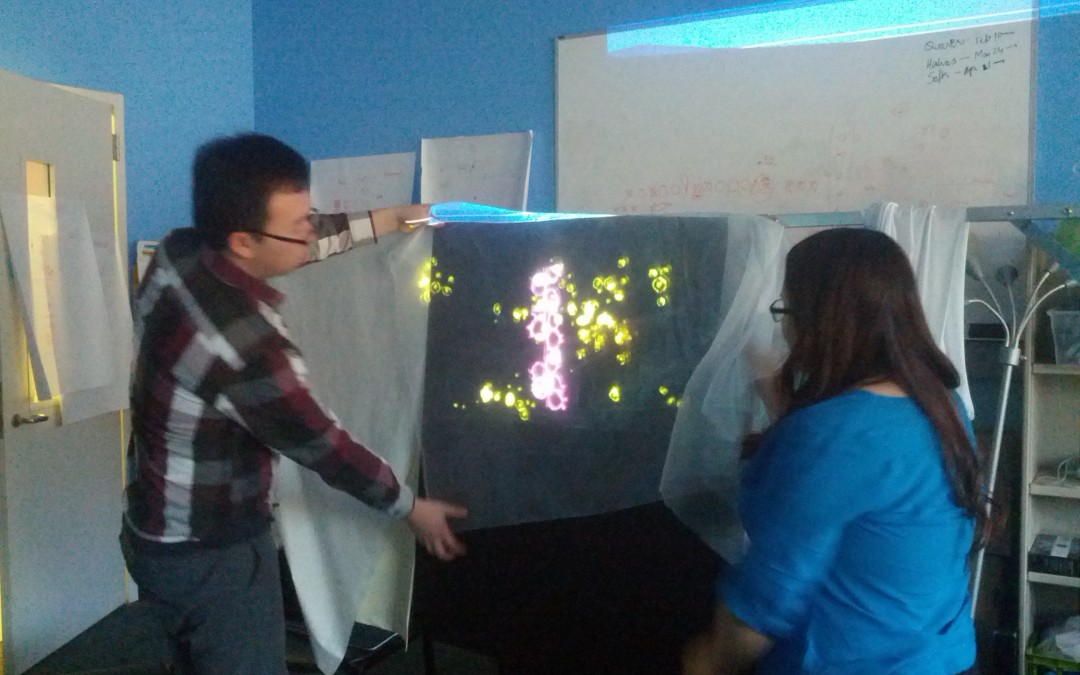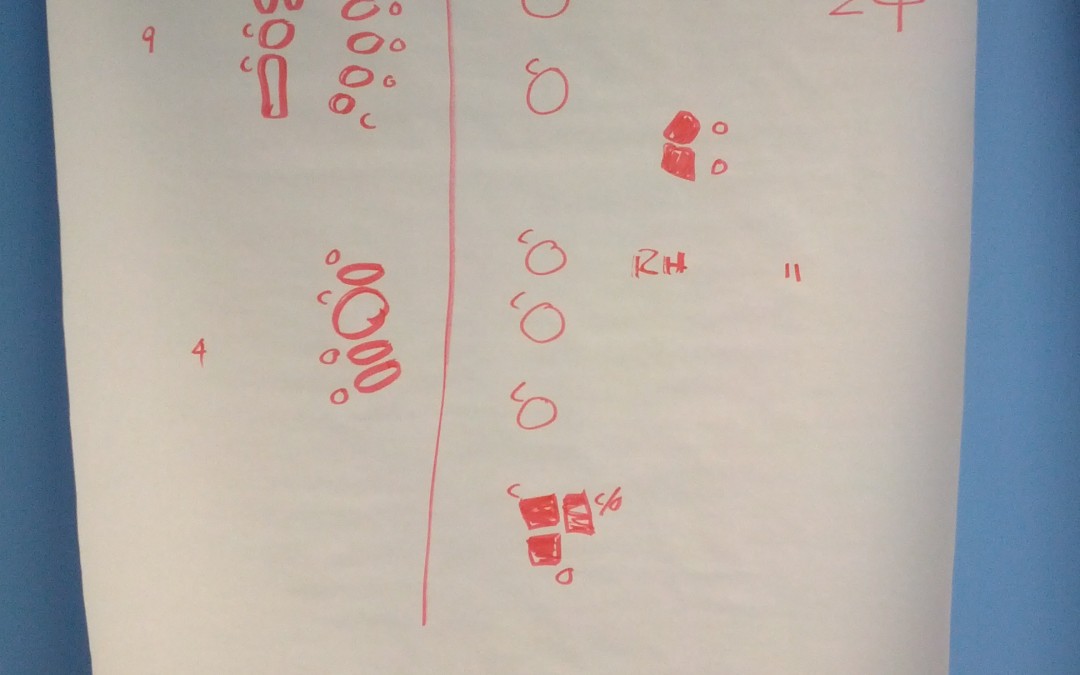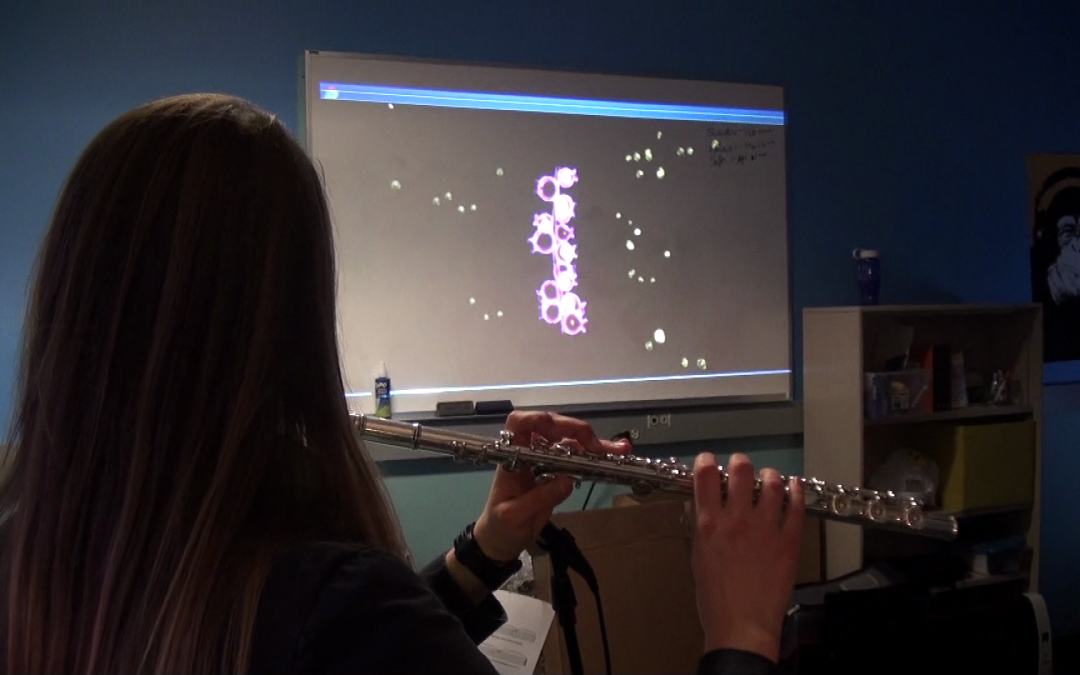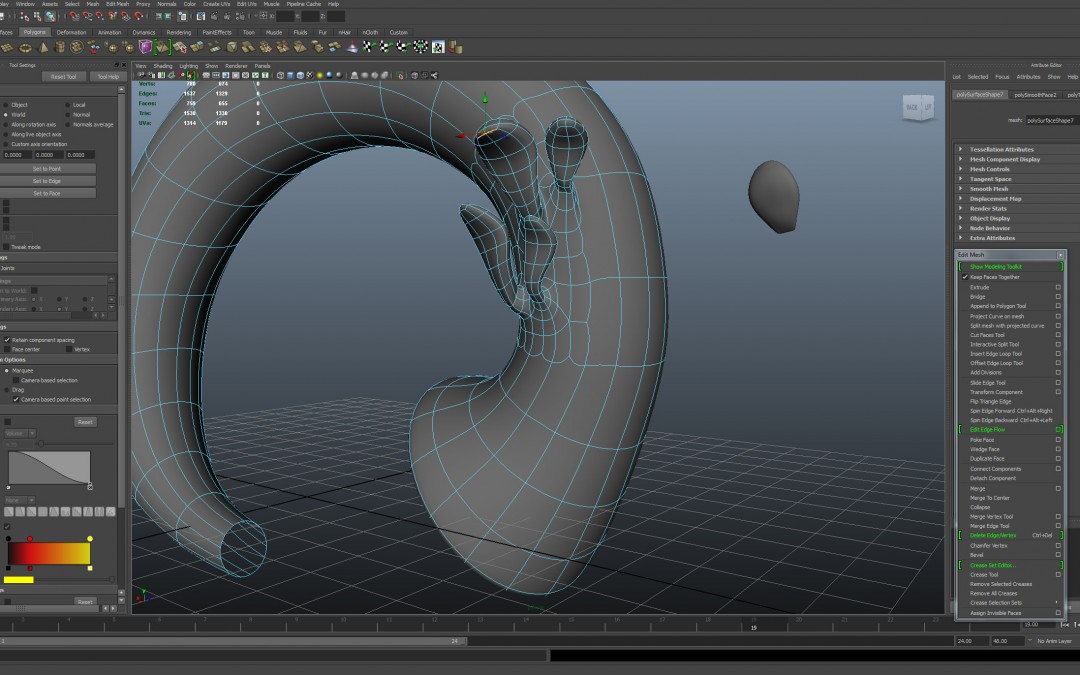by Himanshu Vartak | Mar 30, 2014 | Newsletter
This was Halves week. After two weeks of relative inactivity, the team came back together with a bang and got around to development of the movement 1 prototype. We had to make sure we have a working prototype, that could take in four inputs for each instruments, simultaneously and in real-time. The week was spent in creating the assets required for the remaining instruments, the oboe and the bassoon, and animating them according to the fingering chart and notes. Christina was hard at work at creating accurate fingering charts for the oboe and the bassoon, based on the musicians’ feedback we received over the spring break week. The quick turnaround on these assets enabled Nayoung and Victor to quickly create the 3D art assets and animate them by the middle of the week. Michael and Wei were busy on setting up the virtual cameras in the scene and programming the implementation of the different instruments in the scene. At the same time, we were also continuing the testing of the fabrics and seeing how the visuals would look on them. We thought it would be interesting to have two layers of fabric, a sheer black fabric on top of a white fabric, thus allowing us to have a pseudo 3D effect. This was the first time we were going to see our prototype work with simultaneous input in real-time, so we spent the second half of our week testing the prototype with multiple inputs in a hall area. We tested input from four microphones while playing notes from a single instrument and seeing if the sound was bleeding into...

by Himanshu Vartak | Mar 25, 2014 | Newsletter
This was GDC week. We were working with a pretty skeletal crew.We just had Himanshu and Victor in Pittsburgh, with the other team members attending the Game Developers Conference in San Francisco. Victor continued work on the cell mechanism for the different instruments and came up with slightly different mechanisms to depict this in the scene. We couldn’t really proceed with new content and creating new systems since most of the dev team was away. Even this week was used as a time to polish on existing material. Himanshu was able to meet with Prof. Sarah Pickett, from the School of Drama, to get advice about stage design. Prof. Pickett also advised to go with the design where the musicians would sit on boxes and the visuals would be projected on the front of the box. Unfortunately, Prof. Pickett mentioned that she couldn’t volunteer any assistance from the School of Drama. She did direct us to other resources within the School of Drama who could offer some advice. We will be initiating contact with them. We managed to round up the week, by buying fabric samples, to help decide which sort of fabric would be best to project our visuals on. Seeing as most of our visuals are on a dark background, these steps are important to make sure the visuals pop out and are intriguing to...

by Himanshu Vartak | Mar 24, 2014 | Newsletter
While we were officially on break this week, we still had work to do, since time was of the essence. We still had to get our models for the other two instruments in place and ready to get input from instruments. In preparation for this, we contacted the remaining wood-wind instrumentalists and got them to the ETC to get their pieces recorded. We even got them to help us out with refining our fingering charts for the oboe and bassoon. Besides this, we used this down-time to refine and polish the animation for our existing flute and clarinet systems. Based on the feedback that we got from the flute and clarinet players, we worked on getting the right notes to display the right button combination on the instruments. Victor worked on polishing the animation for the release of cells for the flutes and the clarinet. Michael continued work on the clarinet mechanism and integrating it with the flute in the scene. We hope to get the entire movement integrated in one scene...

by Himanshu Vartak | Mar 24, 2014 | Newsletter
This was the first week when we started having the musicians come in and play the music live for us. To this end, we worked hard on getting our models ready and the system working close enough for us to get useful feedback from the musicians. Before we could do this, we had to make sure that our system recognized the notes correctly. Christina worked with Victor and Nayoung and came up with a fingering chart for the flute and clarinet. This helped both Victor and Nayoung to animate the instruments’ buttons according to the note being played. Now it only remained to be seen if our study and animation would be accurate. We had the first musician, Annie Gordon, the flutist, come in on Tuesday. She found the system pretty responsive, but after playing for a few minutes, identified a glitch in the system for us. The notes that were being identified, were an octave lower. We consulted with her about the way we were identifying our notes, the fingering chart that we were using and identified what buttons are pressed on the flute for the particular notes. We even recorded the flute sections of the pieces for further internal testing. On Thursday, we were expecting our second musician to come in, Allyson Edington, who plays the clarinet. For this, we had to get our clarinet system working in time. While not as polished as our flute system, we were able to get it up and running before Thursday. We had a similar experience with Allyson, who helped us fix bugs in our system with respect to the...

by Himanshu Vartak | Mar 4, 2014 | Newsletter
This week we began work on creating our 3D models that would populate our visualization world. Our lead artist Nayoung, began by creating 2D designs for the flute and the clarinet and the 2D designs of the cells that these instruments would emit. Both Nayoung and Victor then proceeded to create rigged models of the clarinet and the flute, which could then be used in a Unity scene in the way we need them to behave. We got our multiple screen setup to work and now 4 screens are set up from one machine. What is happening in essence is we have one scene in Unity depicting all the five instruments. So far, with simple inputs, we’re able to render these 5 instruments pretty smoothly in real-time. We’re aware that the rendering could get difficult with more complex and fast inputs and are working on optimizing the system. We managed to go to the Kresge Hall this week and take some measurements of the stage and the backstage. We also took photographs of the hall from different audience perspectives to give us an idea what the audience will see from different parts of the auditorium. This also allowed us to create rough stage designs for how to place our screens and the musicians with respect to the audience. We also met with our client Dr. Thomas this week and presented the various stage designs that we came up with. We had some reference images to show her alongwith the stage designs, which made it easier to explain the stage designs that we had...





Recent Comments